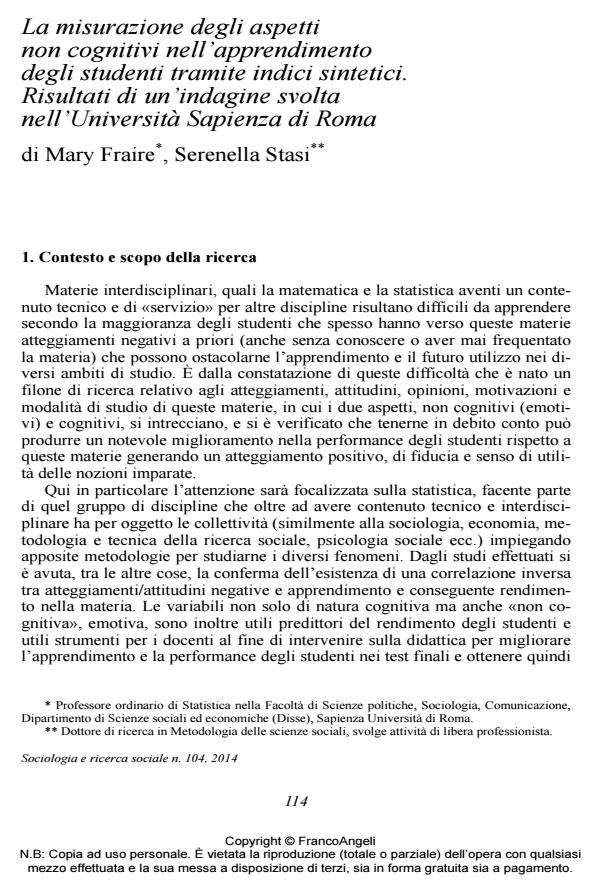La misurazione degli aspetti non cognitivi nell’apprendimento degli studenti tramite indici sintetici. Risultati di un’indagine svolta nell’Università Sapienza di Roma
Titolo Rivista SOCIOLOGIA E RICERCA SOCIALE
Autori/Curatori Mary Fraire, Serenella Stasi
Anno di pubblicazione 2014 Fascicolo 2014/104
Lingua Italiano Numero pagine 32 P. 114-145 Dimensione file 214 KB
DOI 10.3280/SR2014-104006
Il DOI è il codice a barre della proprietà intellettuale: per saperne di più
clicca qui
Qui sotto puoi vedere in anteprima la prima pagina di questo articolo.
Se questo articolo ti interessa, lo puoi acquistare (e scaricare in formato pdf) seguendo le facili indicazioni per acquistare il download credit. Acquista Download Credits per scaricare questo Articolo in formato PDF

FrancoAngeli è membro della Publishers International Linking Association, Inc (PILA)associazione indipendente e non profit per facilitare (attraverso i servizi tecnologici implementati da CrossRef.org) l’accesso degli studiosi ai contenuti digitali nelle pubblicazioni professionali e scientifiche
After a brief introduction on the evolution of measuring instruments for cognitive and non-cognitive factors in students’ learning , the 28-item Survey Attitudes Towards Statistics (SATS ) scale is applied on a sample of 135 students attending introductory statistics in the Sociology and Social Service courses at «Sapienza» University of Rome. In the survey two different 28-item format responses have been compared: five-point and 0-5 cm. segment. Both sets of data have been analysed and compared by Principal Component Analysis. The factorial structure resulting suggests that the components are not clearly separated; therefore a different composite indicator (index) is suggested, instead of the classic indexes based on the single factor solutions. The new index shows the multidimensionality of the phenomenon, has different requisites, a simplified measurement and interpretation, and reliability coefficient theta is 100%.
Mary Fraire, Serenella Stasi, La misurazione degli aspetti non cognitivi nell’apprendimento degli studenti tramite indici sintetici. Risultati di un’indagine svolta nell’Università Sapienza di Roma in "SOCIOLOGIA E RICERCA SOCIALE " 104/2014, pp 114-145, DOI: 10.3280/SR2014-104006